| Umělec magazine 2000/5 >> Getting the Better of Death | List of all editions. | ||||||||||||
|
|||||||||||||
Getting the Better of DeathUmělec magazine 2000/501.05.2000 Tomáš Pospiszyl | taboo | en cs |
|||||||||||||
|
"Getting the Better of Death
Max Klinger’s painting Death Urinating (c. 1880) depicts precisely what the title says: The unusually tall format shows a skeleton urinating into a lake amid the quiet landscape. The picture captures Death in an untraditional, intimate moment. The picture’s composition suggests that the viewer is an observer hidden at a safe distance and Death has no idea anyone is present. Death believes it is alone in this remote location, or it wouldn’t be urinating openly and shamelessly into the calm lake. The skeleton’s scythe rests idle on the bank: Death’s not working on disseminating evil, and is simply relieving itself. Death as a revivified skeleton is one of the fundamental motifs in Christian art, a frequent theme at the end of the 19th century. Although this imagery may be based on Christian symbolism, its meaning goes beyond the boundaries of Christianity. In addition to high art, death also became an integral part of European folklore and folk stories, easily entering popular art expressions such as pulp illustrations and signboards. Death plays a role in the generally understood allegory of mortality and the end of life. Such themes are frequent not only in religious art but are also popular horror stories and are present in symbolist and decadent art at the end of the 19th century. You can come across revivified skeletons almost everywhere. Personified death appeared in the works of such artists as Arnold Bocklin, Lovis Corinth, and James Ensor. Even Vincent van Gogh1 painted a unique skeleton with a cigarette. These Deaths are typically ominous figures armed with scythes or endowed with mysterious, unparalleled power that places all humankind—or at least those depicted—in danger. Although the most curious, Death Urinating was not Klinger’s only work based on this theme. His two-part print cycles called Of Death I and Of Death II, published in 1889 and 1898 respectively, are more known. This cycle illustrated the popular concept of death at that time as the elementary cosmic power nobody could escape. This grim fatalism was reflected in the serious symbols Klinger used. Because of the theme and its mystic rendition, there is not a single flash of wit. But what should one think of the absurd image of a urinating skeleton? Death is not alone in most pictures. Allegories of Death are based on the direct contrast of living human figures with Death’s skinny body or skeleton; the skeleton may also turn to gaze directly at the viewer. In Klinger’s painting, death is alone. Furthermore, it is captured in an intimate moment. With what, how and what substance does death urinate? A skeleton does not drink; it lacks all the organs enabling digestion and excretion. Is the artist ironically suggesting that natural urges are stronger than death? The viewer is superior to death in this unusual scene. Watched from a safe distance, yet still dangerous, death is mocked in its moment of weakness. Klinger’s bizarre scene of a urinating Death has its surprising followers in art history. More than a hundred years later, Keith Haring handled a similar theme in his untitled diptych inscribed to James Ensor. Haring’s scene is missing Klinger’s suspense and drama; on the contrary it is full of kind humor. Haring made it easier for his death to urinate as he equipped it with a bone penis. Urine is aimed at and falls on flowers; the mysterious element in the picture is the shiny key in the skeleton’s hand. The other panel shows death smelling the flowers, which seem to have flourished compared to the first image. This kind of black humor is not surprising considering the fact that the work was made when Haring knew AIDS had cut his life short. The Ensor reference is logical thanks to Ensor’s passion for portraying similar tragic and comic skeletons: His print of a man urinating on a wall from 1887 is also well known and frequently reproduced. An almost identical city urination scene, which appears in the aforementioned Ensor, is also part of Dubuffet’s lithographic series Walls (1945).2 The wall that is urinated on is just as important for Ensor as it is for Dubuffet. In both cases it is covered with simple graffiti. The parallel is clear: a man urinating signs or “brands” his wall this way just like a graffiti artists would, appropriating a part of the anonymous urban environment. Urinating is not only an expression of biological need but also an arrogant and animalistic exhibition of male identity. Jackson Pollock’s “drip” painting technique is sometimes interpreted similarly. He attempted to express subconscious mental processes and to use aggressive gestures similar to a graffiti artist in order to “destroy” and at the same time appropriate the canvas.3 Directly linked to Pollock is the use of urination in Oxidation Paintings by Andy Warhol (1977). Warhol had his assistant drink a large amount of beer and urinate on easily oxidized materials. It was a response to Pollock’s subconscious and unregulated painterly gesture, executed in this case with a penis rather than a hand; it also has a clearly homosexual subtext.4 All the meanings appearing in the mentioned examples of urination in art could have been held dearly in the mind of the intellectual graffiti artist Haring for a number of reasons. He knew Warhol very well, and he worked with him many times; his disease lead not only to his activism fighting AIDS but also to thoughts of his own mortality and efforts to resume his life. Facing the sad perspective of death also certainly helped to create the desire to leave a clear mark, a signature outliving his death, uneffaceable graffiti. Excluding city fountains all together, the act of urinating has not been that rare of a theme in the art of the past few centuries. And it has been especially common over the past 50 years as traditionally taboo issues were basically edged out. The meaning and symbolism of urination tends to swing in a surprisingly wide range. In contrast to the poise of a urinating woman, a man urinating in an upright position represents an act of triumphal arrogance. It is often interpreted as a proud and witty expression of the rejection of all social conventions.5 Urinating as homo-eroticism appears in Robert Mapplethorp’s works and photographs by Pierre et Gilles. It is however not only the realm of men or homosexuality. British artist Hellen Chadwick dealt with it as a means of attaining control over territory that seemingly belonged exclusively to men. Her sculptures, which look like abstract bouquets, are in fact the negative cast pieces of holes created in the snow where Chadwick had urinated.6 Urinating can also play the purely “innocent” and non-erotic role of a neutral means of expression in the arts. Action artist Tom Marioni urinated from a ladder into a nearby metal bucket in his sound sculpture. The action caused the audience to snicker yet it illustrated Morioni’s broad understanding of what may be understood as sculpture.7 Keith Haring’s work and personality are devoid of aggression and cruelty; his urinating skeleton feels very human and, in contrast to Klinger’s interpretation of the same theme, we may assume that it was a self-portrait—a “future” self-portrait of a dying artist. Let’s remember that James Ensor made a similar “future” self-portrait in his work My Portrait in 1960 (1888): a supine, decomposing skeleton.8 For Ensor, as with Klinger, skeletons are portrayed allegorically. They are however imbued with a stronger sense of mad and often inexplicable black humor. In addition to mercilessly scything living people, Ensor’s favorite revivified skeletons also indulge in various banal activities such as playing pool, fighting over a herring and warming up over a stove; they just do what ordinary people do. In contrast to those who often forget about their mortality, his skeletons always bear the image of their own death, resisting it with ironic humor. The lesser-known Ensor painting Battle of Skeletons (1907) is a swarm of hundreds of skeletons, hard to distinguish, blending into one another, battling in a war of cosmic proportions. The painting depicts nothing but this battle, completely covering the entire visible world. But what sense does it make when all the participants are already dead? Isn’t this an utterly pointless activity? In the painting’s bottom left corner, there is a row of skeletons that have lost interest in the battle and instead are urinating on flowers growing from the earth. They are clearly not damaging the plants. On the contrary. The miniature figures are hard to see but we get the feeling that the skeletons are maliciously enjoying their behavior. Again, this is death in an intimate yet group situation; again it has the same feeling, only it’s not as frightening as before. This brings us to the very core of Haring’s picture. Unfortunately we have no proof that Haring ever saw Ensor’s Battle of Skeletons. He spent his last years furiously traveling around the world. On 17 April 1989, while in Munich, he visited the Ensor exhibition in local Kunsthalle, noting it in his diary. This exhibition however featured neither My Portrait in 1960 or Battle of Skeletons. But it could have inspired Haring’s interest in the Belgian painter, and he could have seen his works from reproductions in books. Perhaps it is a fortunate accident. Haring made his Ensor-esque diptych on 5 May 1989, only a month after his visit to the exhibition.9 It is one of his last paintings. He died in New York on 16 February 1990. In his introduction to Haring’s journals Robert Farris Thompson paused a moment when mentioning the diptych inscribed to Ensor and offered a brief analysis.10 First, he believes that the skeleton is not urinating on the flowers but ejaculating on them. He interprets the mysterious key in the skeleton’s hand as a symbolic key to the Judgement Day whose rays suggest it is just about to miraculously disappear. Thompson interprets the second part of the diptych as Haring’s reconciliation with death: His semen falls on fertile soil. We will surely not controvert this conclusion because the painting speaks for itself. Let’s challenge the difference between ejaculation and urination. Thompson’s assumption about ejaculation is based on the fact that the skeleton’s penis is erect. Considering the boney material of his body, it could not be otherwise. The consistency of the stream splashing the flowers does not correspond to that of semen; it is more characteristic of Haring’s schematic representation of urination. Furthermore, ejaculation would certainly mean the dissemination of “evil” semen containing the deadly HIV virus. Since the second part of the diptych shows death looking at the lush flowers with pleasure, Haring—who actively promoted safe sex—must have portrayed the urine as nourishing the plants. In contrast to ejaculation, urination may represent the graphic “branding” of the flowers by a graffiti artist who saw himself as the skeleton into which he would decay after his death. He does not work on a wall but “tags” poetic, beautiful flowers. Urination may also represent “painting with a penis” and the grown flowers may mean the fruits of his work, which would outlive his death. In light of Ensor’s Battle of Skeleton it is impossible to read Haring’s work as a simple homage or a scene with references to certain sexual practices. It is a direct or mediated response to Ensor’s work that Haring applied to his own life circumstances. Haring saw his death as a necessary part of life, knowing he couldn’t escape it. Urinating on flowers is a rowdy act but it is not aggressive. We feel that Death/Haring does not foul the flowers but in fact waters them, and enjoys their smell and growth. We can only get the better of Death by accepting it, by losing the fear of Death. Smelling the flowers represents Haring’s elegant farewell to the world and the beauty he would no longer enjoy in a few short months. Notes: 1. Skeletons and Deaths are frequent elements in Czech art due to their presence in folklore and “serious” literature. They appear in works by Josef Váchal, Jaromír Panuška, František Kobliha, František Kupka, Alén Diviš and hundreds of others. Symbolic death in the form of a skeleton or a skull appears in the works of Kubišta and others. 2. Thirteen graphics from this series were published in 1950 together with Guillevic’s texts, including the scene with the man urinating. 3. See chiefly Rosalind Krauss, Optical Unconscious, MIT Press 1993, chapter six. 4. Warhol first experimented with this by urinating on a horizontally positioned canvas in 1961. Making paintings through urination also appeared in the Pier Paolo Pasolini film Teorema (1968). Inspired by a Francis Bacon painting and longing to portray a mysterious visitor to the bourgeois family, one of the main characters of the film begins experimenting with painting. Gradually he progresses from realistic to abstract painting, layering the individual levels of the painting on glass boards. Still he is not satisfied with the result as the paintings insufficiently express the image and substance of the stranger who gradually seduces and then leaves all members of the rich family, including the main character. Out of despair and in a sudden moment of awakening, the neophyte artist urinates on the canvas. 5. During one of his public performances, Vienna-based action artist Otto Muehl first urinated in his partner’s mouth and then lay on the floor and urinated in his own mouth. A more detailed description and analysis of Muehl’s actions can be found in a.o. Burs, Muehl, Nitsch, Schwarzkogler, Writings of the Vienna Actionists, compiled and translated by Malcolm Green, London, Atlas Press, 1999. 6. Public urination was one of the highlights of Annie Sprinkle’s performances. This feminist performance artist got her artistic name thanks to this specialty. 7. Works that use urine as one of its elements and materials form a chapter of their own, for example works by Gilbert and George, and Andres Serrano. 8. In addition to this print, this motif also appears in other Ensor paintings, such as Self-portrait as a Skeleton (1889) and Skeleton at an Easel (1896). It is interesting that both of these paintings were made after Ensor’s photographic portraits. In Czech art, Karel Hlaváček worked with a similar theme. 9. Various sources also state the date of 5 November 1989; see the exhibition catalogue of Keith Haring, Milano, Charta, 1994. 10. See Keith Haring Journals, New York, Viking 1996, p. 24. "
01.05.2000
Recommended articles
|
|||||||||||||
|
04.02.2020 10:17
Letošní 50. ročník Art Basel přilákal celkem 93 000 návštěvníků a sběratelů z 80 zemí světa. 290 prémiových galerií představilo umělecká díla od počátku 20. století až po současnost. Hlavní sektor přehlídky, tradičně v prvním patře výstavního prostoru, představil 232 předních galerií z celého světa nabízející umění nejvyšší kvality. Veletrh ukázal vzestupný trend prodeje prostřednictvím galerií jak soukromým sbírkám, tak i institucím. Kromě hlavního veletrhu stály za návštěvu i ty přidružené: Volta, Liste a Photo Basel, k tomu doprovodné programy a výstavy v místních institucích, které kvalitou daleko přesahují hranice města tj. Kunsthalle Basel, Kunstmuseum, Tinguely muzeum nebo Fondation Beyeler.
|








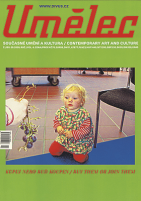














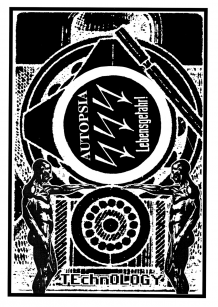




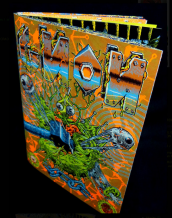
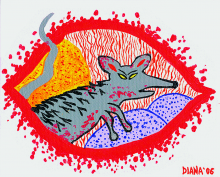

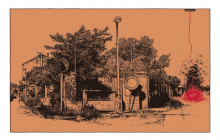


 We Are Rising National Gallery For You! Go to Kyjov by Krásná Lípa no.37.
We Are Rising National Gallery For You! Go to Kyjov by Krásná Lípa no.37.
Comments
There are currently no comments.Add new comment